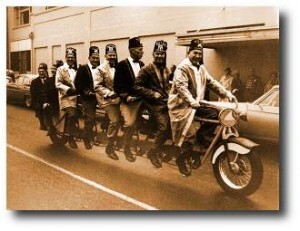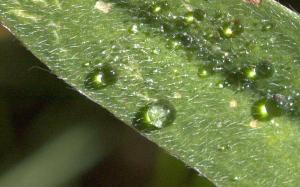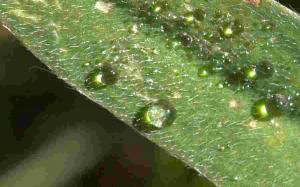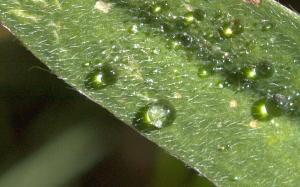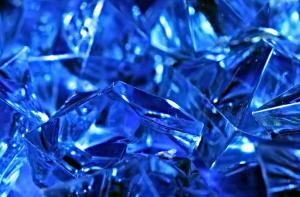We want you to have the best possible photographic print or fine art reproduction with the least amount of difficulty. For an engaging experience with outstanding results, simply follow the instructions below!
Recommended Working Color Spaces
While we suggest that you convert to profile for all large format prints (LightJet and Giclee Pigment Prints) we provide you the freedom to submit your files in any color space you prefer. The table below shows our recommended working spaces.
| Giclee | Large Format Photo (LightJet prints up to 49x120) | Enlargements and Proofs (Frontier prints up to 12x18) |
|
|---|---|---|---|
| Recommended Working Color Space | Adobe 1998 or sRGB | Adobe 1998 or sRGB | sRGB |
A note on filenames
- File names must have the appropriate .tif or .jpg extension and must not contain characters such as: \ / :*?”|’~ $ spaces right before the period, bullets or foreign characters.
Monitor Calibration and Color Profiles
- Let’s start with how you see your digital files. Every monitor is different and changes over time. It’s important to keep your monitor calibrated and as close to output reality as possible. The purchase of a quality colorimeter is a good investment.
- We calibrate our production displays using the X-Rite i1 Display 2 colorimeter. Our monitors are set to a gamma of 2.2 and a color temperature of 6500k. We use Daylight balanced (5000k) illumination for color assessment unless you request otherwise. This excludes backlit trans, which use an industry standard of cool-white.
- The best prints come from the best digital files. No amount of profiling will accurately compensate for poor exposure, over-worked corrections or inaccurate color. Profiles merely help with attaining a print that is truer to the actual content of the file. We strongly recommend using a properly calibrated display with the correct working space/output profile combination for a given printer or device. If you want to learn more: Color calibration information is available by clicking here.
Turnaround
- All instructions must be written legibly, verbal instructions will not be exclusively accepted. When supplying a file for output, job turn around times begin on the first business day when we have received all required elements to complete the job.
- Compress (zip archive) your fonts if you are uploading your files, or convert your text to outlines.
Please include:
- All screen and printer fonts
- Linked files
- A hard copy layout with a color reference if applicable. For uploaded files, please include a client approved PDF.
- Provide images in the proper color space as listed for each device.
- Lightjet – converted to our output profile, or in a working space such as Adobe 1998 or sRGB
- Failure to properly set-up and include all necessary files MAY DELAY YOUR JOB! Any production time required to correct set-up errors, improper color-space, incorrect file type, proportions etc, may result in intervention charges billed at a $60 set-up fee, plus applicable hourly rates. All output pricing is based on the size required to print all data in your layout, including crop-marks, registration marks and bleed. Because we use a multi-platform network, it is imperative that file names be fully cross-platform compatible; no punctuation or extended characters such as bullets, trademark, slashes, dollar signs, commas, etc. Hyphens and underscores are acceptable.
Programs
Our Fuji-Frontier Mini-lab only accepts .jpg and .tif RGB files (sRGB is preferred for the most predictable color). Layout files and or PDF are not printable on this device. Please convert your files to .jpg or .tif before submitting for small format printing.
For large format printing, we accept files from the most current versions of the most popular professional graphics and layout programs listed below. If you are using a different program for your work please give us a call.
Adobe In-Design
- .native, .eps, .pdf
- RGB preferred
- Please convert all text to outlines
- All screen and printer fonts
- Linked files
- A hard copy layout with a color reference if applicable. For uploaded files, please include a client approved PDF.
- Provide images in the proper color space as listed for each device.
- Whenever possible, prepare your layout to final size of output.
- If full size is not an option, please use a scaling of 50% or 25% .
- If bleed is not included within the document area then it will not be printed.
- If there is no bleed included, we will usually enlarge the print slightly to accommodate mounting.
- Please inform us of the final document print size, so the job is not delayed while we contact you for that information.
Adobe Illustrator
- .native, .eps, .pdf
- RGB preferred
- Please convert all text to outlines
- All screen and printer fonts
- Linked files
- A hard copy layout with a color reference if applicable. For uploaded files, please include a client approved PDF.
- Provide images in the proper color space as listed for each device.
- Whenever possible, prepare your layout to final size of output.
- If full size is not an option, please use a scaling of 50% or 25% .
- If bleed is not included within the document area then it will not be printed.
- If there is no bleed included, we will usually enlarge the print slightly to accommodate mounting.
- Please inform us of the final document print size, so the job is not delayed while we contact you for that information.
Adobe Photoshop
- Flattened, uncompressed tiff or max quality jpg.
- Adobe 1998 or sRGB.
- We reccomend converting to our profiles when applicable
- Provide images in the proper color space as listed for each device.
Microsoft PowerPoint
QuarkXPress
- .native, .eps, .pdf
- RGB preferred
- Please convert all text to outlines
- All screen and printer fonts
- Linked files
- A hard copy layout with a color reference if applicable. For uploaded files, please include a client approved PDF.
- Provide images in the proper color space as listed for each device.
- Whenever possible, prepare your layout to final size of output.
- If full size is not an option, please use a scaling of 50% or 25% .
- If bleed is not included within the document area then it will not be printed.
- If there is no bleed included, we will usually enlarge the print slightly to accommodate mounting.
- Please inform us of the final document print size, so the job is not delayed while we contact you for that information.
Fonts
- All screen fonts and printer fonts must be included or text converted to outlines.
- DO NOT use keyboard commands for bold or italic fonts.
- Use actual bold or italic fonts where applicable.
Layout
- Whenever possible, prepare your layout to final size of output.
- If full size is not an option, please use a scaling of 50% or 25% .
- If bleed is not included within the document area then it will not be printed.
- If there is no bleed included, we will usually enlarge the print slightly to accommodate mounting.
- Please inform us of the final document print size, so the job is not delayed while we contact you for that information.
Color
- All efforts will be made to approximate to your supplied color samples, however, due to the limitations of the different media, we cannot guarantee an exact match.
- Color corrections that require more than global corrections will incur retouching charges. Items that we scan may require billable retouching time to match an original.
- If a test must be approved before finals are hit, the finals will have normal turn around times, beginning from the time of approval for color.
- If Pantone or process color matches are requested, we recommend calling so we can give you the closest equivalent color build for a given media.
- All devices print differently, and different media on the same device may not produce the same results. An image corrected for one media may require additional retouching time to correct the image for another media.
- Images supplied by the customer will be charged computer time to match color to a proof.
- Remember, what you see on your monitor for color is not always a good indication of how the final print will look.
Proofs
- If a proof is required, it will be done on the same device and media as the final print.
- The proof will be the full image, printed to an 8″x10″.
- If a strip test is requested at final size, there will be an additional charge applied.
- If you require a proof after layout adjustments ie: text changes, image placement etc., we can email a PDF. If the files exceed 50 megabytes, we may print a screen capture of the layout. We will e-mail a PDF or screen capture free of charge.
Removable Media
We accept the following removable media:
- CD-ROM/ DVD
- Thumbdrive
- Micro storage cards
- You may also send you files via our web upload page.
LightJet – large format photo prints
LightJet Calibration Specifications and Profiles are available by clicking here.
Files submitted for LightJet output must be supplied:
- In an RGB color-space
- As non-compressed, flattened tiffs or maximum quality jpeg – no layered files.
- Use of our profiles is highly recommended but not required.
- At a minimum resolution of 150 ppi at 100% of final size.
- For prints smaller than 20×24 it is recommended that the resolution of the file be closer to, but not to exceed 300 ppi. and rely less on the LightJet’s superior built-in interpolation.
- The LightJet’s maximum resolution in normal mode is 300 dpi. For large prints from lower resolution files, we rely on the lightjet’s internal interpolation algorithms to achieve that final resolution.
Giclee Pigment on Canvas and Watercolor
- The Pigment printers will print up to a 60 x 120 inch image area on a maximum paper size of 60 inches wide.
- Watercolor paper or canvas,
- Raster Images should be supplied at a minimum resolution of 200 ppi at 100% of output size as RGB TIFF- Adobe 1998 or sRGB.
Fuji Frontier Mini Printer for prints up to 12×18
The Fuji Frontier Digital Photo Printing Minilab accepts files in the following formats:
- sRGB 8-Bit Tiff (no LZW)
- sRGB 8-Bit Jpeg
- Greyscale 8-Bit Tiff (no LZW)
- Greyscale 8-Bit Jpeg
- File names must have the appropriate .tif or .jpg extension and must not contain characters such as: \ / :*?”|’~ $ spaces right before the period, bullets or foreign characters.

